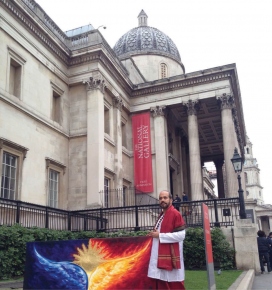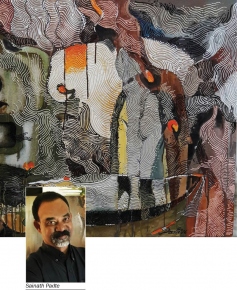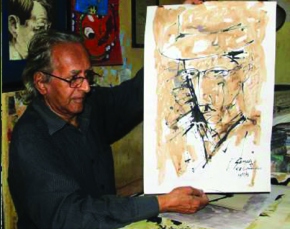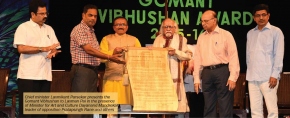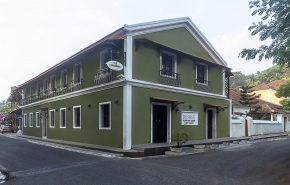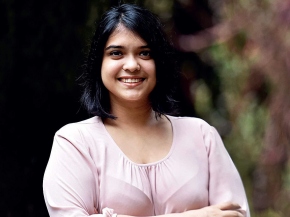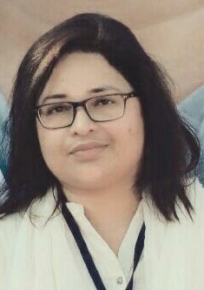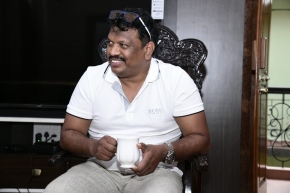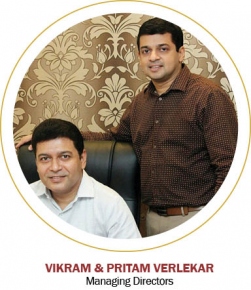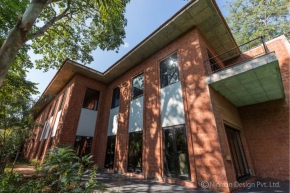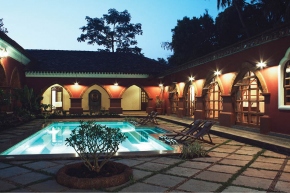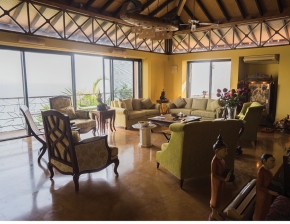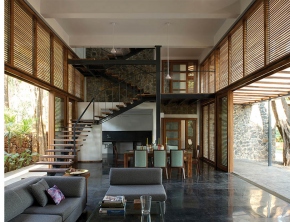The Serendipity Arts Festival ends with a bigger and brighter fourth edition
Accessibility and inclusivity was brought to the core of the multi-disciplinary arts festival
The 2019 edition of Serendipity Arts Festival came to an end on the 22nd of December, following a huge turnout of lakhs of people across venues during the festival. Over 100 dynamic projects showcasing the visual, performing and culinary arts, across 12 iconic venues in Panaji, Co-Presented by Havells and Powered by HDFC ERGO & GMR, the festival has transformed the city into a vibrant cultural space with multiple exhibitions, performances and immersive art experiences involving over 1500 regional and international artists.
One of the key objectives of this year’s Serendipity Arts Festival was to continue being a catalyst for cross-cultural exchange, fostering a sense of unity across disciplines and art forms whilst also erasing regional divisions in the country. Offering equal opportunities to artists, artisans, indigenous and folk art forms, performers and other creative practitioners from all over India, the event aims to foster the development of thriving artistic communities across India by making the arts inclusive, educational and accessible.
The Goan public and culture enthusiasts visiting the city from across the world were treated to an impressive array of programming including visual arts exhibitions, large-scale photography and craft installations, music performances, panel discussions, film screenings, culinary workshops and theatre performances across venues including the Adil Shah Palace, Old GIM, Old GMC, Old PWD Complex, Children’s (Art) Park and the Institute of Menezes Braganza hall as well as dance and music performances in the evening in SAG Ground and DB Football Ground.
On the final day of the festival Ms. Smriti Rajgarhia, Director, Serendipity Arts Foundation and Festival said, “It has been an immense experience bringing all the various creative energies from across the world and the South Asia region on one platform for the public to see, experience, re-imagine and interact with. We feel wonderful knowing that the Serendipity Arts Festival has now become an annual festivity of the arts that people dearly await here and those that travel from around the globe to be here. We are thankful to all our patrons, partners, curators, artists and the team members for making this festival such a unique experience year on year.”
Speaking at the occasion Mr. Sunil Kant Munjal, Founder Patron Serendipity Arts Foundation said, “Arts’ if you look at history had either always survived perilous times or emerged from it. An art in practice has an innate ability to acclimatize itself to the situations around it, which makes the arts an inseparable part of our legacy and being. The changes in the society that we today take pride in are concepts really developed through the arts, it has empowered our minds and inspired scientific researches. Without the arts, our race would have been just another species on the planet and not a civilization. At the Serendipity Arts Festival, we give immense importance and take pride in promoting the cultural heritage of the nation and the region that has over 5 millennia shaped our civilization and given us roots! In our nation, if we boast of our roots, that give us our identity, then we must also learn to respect our arts, as it is what gives shape to it our cultural heritage an indispensable part of our roots.”
Also, on popular demand, the exhibition at the Old GIM has been extended for public viewing until January 15, 2019. The Visual Arts and Photography exhibitions this year offered a diverse spectrum of projects, each considering a distinct tenet of artistic practice, from collections, archives and historical works, to performance and street art, and lens-based practices from around South Asia. Each exhibition presented different aspects of visual arts and lens culture through their curation, as well as projects which focus on indigenous innovations that rest beyond the framework of the mainstream art world. Goa audiences have been exposed to diverse international artists furthering the Festival’s objective of promoting cross-cultural exchange and fostering global dialogue via the arts.
Dr. Jyotindra Jain’s exhibition Image Journeys: The Conquest of the World as Picture at Adil Shah Palace offered critical viewing of popular Indian imagery at the turn of the twentieth century in the construction of its social and national identities. Sudarshan Shetty’s project title Look Outside This House presented indigenous inventions and informal industries that have origins in catering to real-life circumstantial needs with lasting social impact on communities at large.
Ravi Agarwal explored the concept of staged photography with an exhibition titled Imagined Documents that flits between reality and fiction focusing on works that employ various sorts of strategies and techniques to tell a story. Rahaab Allana’s trans-media curatorial project titled Look, Stranger! draws on the aesthetic ideologies and approaches to image-making and materiality as cultivated by the Bauhaus, which celebrates 100 years in 2019.
Other key exhibitions under special projects include Nancy Adajania’s Counter-Canons Counter-Culture: Alternate Histories of Indian Art that demonstrates the rich, living heritage of art-making in postcolonial India that had little or nothing to do with this dominant narrative. Virtuality As Reality by Jessica Castex and Odile Burluraux (Musée d'art moderne de la Ville de Paris) that reflects the idea of virtuality that irrigates ever more strongly the daily life. Mundo Goa by Vivek Menezes which highlights the infinitely varied ways of being and belonging that creative thinkers derive from the unique cultural scenario, with its deep-rooted connections across the subcontinent, to Africa, South America and Europe, and more recently North America and Australasia. Merchant of Images by Aradhana Seth is a mobile project that takes its audience back in time, to the age of the old-fashioned photo studio. ST+ART Foundation has transformed and established Panjim as India’s fourth art district to create art accessible to everyone.
Dynamic Music programming at the Festival included evenings of performances at DB ground - jazz with Louiz Banks and Braz Gonzalves; musician, songwriter composer DJ Karsh Kale; renowned playback singer for Indian films, Rekha Bhardwaj curated by leading Bollywood Music Director Sneha Khanwalkar. Exploring a range of Hindustani and folk music traditions, and folk fusion with Shy Ben Tzur and the Rajasthani Express, in addition to Hindi poetry and the art-rock genre, the programming also included visual and aural installations, offering visitors a unique sound experience that showcases the synergy between sound, visuals and technology. Aneesh Pradhan, one of India’s leading tabla players, curated a range of projects showcasing known national
and international musicians as well as groups from Goa, Maharashtra, Rajasthan, Uttarakhand, Bengal and Manipur offering audiences a unique amalgamation of both Western and Indian music. One of the highlights of the Festival’s music programming was the River Raga, conceived by guest curator Shubha Mudgal.
Serendipity Soundscapes, an initiative by Serendipity Arts Festival brought together the unique sounds of the subcontinent via some extraordinary projects. Aneesh Pradhan presented, Dil Ki Baatein: Affairs of the Heart in Songs, a series of music compositions by artists performed in a studio-like set-up with a band and accompanying artists performed in front of a live audience.
Celebrated actress, director, theatre professional and one of Bengaluru’s cultural icons Arundhati Nag, founder of the Rangashankara, curated the theatre discipline this year along with Atul Kumar, actor, director, founder and Artistic Director of The Company Theatre. The programming in theatre this year pushed beyond defined boundaries by moving away from the proscenium. The performances explored fresh avenues to showcase traditional forms with a contemporary twist, continuing with Theatre for Early Years, introducing young children to the importance of theatre and highlighting the creative presence of marginal communities, emerging practices and experiments with style.
Festival also showcased the continuation of Spotlight on the Margins, a brainchild of the festival with the objective of dissipating normative stereotypes and hegemonic practices foregrounding the marginal realities of the prejudiced, through Dario Fo’s celebrated political satire, Accidental Death of an Anarchist (1970). Included as part of Arundhati Nag’s curation, the play reiterates the festival’s motives by claiming sync with Fo’s ideology on the improvement of the world with class struggles. Furthering the engagement, the festival also featured a Special Project by French artists, Ramona Poenaru and Gaël Chaillat titled Shelter, which invited participants to collectively build an imaginary city with cardboard boxes, ideating ‘thinking by doing.’ Atul Kumar’s curation in this edition ranges from the socio-political in Eidgah Ki Jannat, to a personal experience of gender dynamics in Bhaagi Hui Ladki. He has also included Sounding Vanya, an adaptation of Anton Chekhov’s Uncle Vanya (1898) – dismantled, interrogated and reassembled into sounding different from the expected.
The curation of the Dance programme this year attempted to engage as many forms of contemporary and traditional Indian dance as possible, including folk. At their core, these projects were interdisciplinary in nature, resulting in a balance between music, dance and drama. This year’s performances particularly emphasized on identity as an explorative subject through a series of two performances and a panel discussion curated by Leela Samson, Chennai based Bharatanatyam dancer, choreographer, instructor and Padma Shri awardee. Mayuri Upadhya, co-curator Dance projects, presented On The Move, a street dance battle for the first time in Serendipity Arts Festival at the multi-level parking space to showcase that dance can be ‘accessed and processed differently’.
Speaking at the occasion, Mr. Ameet Gupta, Whole time Director, Havells India Limited and Patron, Serendipity Arts Festival said, “Serendipity Art festival is the right place to explore and enjoy art in various forms. The festival not only brings creativity to the fore but is a great attempt to save various dying arts and provide platform to artists who otherwise may not be able to reach out to so many people. I am privileged to have met such artists and luminaires from the field. At Havells, we truly believe that conserving art, culture and heritage are critical to growth as it provides a sense of identity and continuity in a fast-changing world for our future generations”.
The Festival also proactively engaged a range of demographics with a strong policy of diversity and inclusion bringing together over 1200 students from various schools in Goa along with underprivileged children through a series of specially curated participatory events and tours. The fourth edition - SENSES 4.0 pushed the brackets further by not only acknowledging disability access for varied visitors but also using the Festival as a catalyst to talk about Mental Health and introducing Arts Based Therapy workshop as part of the outreach. From this year on, SENSES 4.0 increased their engagement with special need schools for five months (pre and post SAF) instead of only once a year workshop. SENSES is curated by Siddhant Shah of Access For All. Facilities like ramps, tactile Braille artworks, Braille guides, sign language experts, inclusive outreach programs and on-ground accessibility team, were provided for easy access for varied audiences.
Coca-Cola India spokesperson said, " Coca-Cola India is proud to be back as a partner for the 2019 edition of Serendipity Arts Festival and present this year's closing act, Coke Studio feat. Nooran Sisters. Music has the power to transcend barriers and bind people together and we hope that audiences will have an unforgettable experience.”
Much emphasis was given to the Festival’s commitment to the sustainability of the arts and the environment this year with a focus on sustainability and eco-friendly practices. These included alternative drinking water stations, biodegradable cutlery, segregated waste bins, accessible across venues and workshops. Some of the Culinary Arts projects will also focus on sustainable food practices of the region. To further cut down on carbon footprints and use of paper, and to give a smoother experience to the festival visitors the festival also launched Serendipity Festival App. Along with that, there were Touch-pods with programme details and other important information available at each venue, for ease of navigation and wide creative and digital inclusion, while also encouraging people to use the shuttle service to visit and travel in between the venues.
Festival’s commitment in restoring old building continued this year with erstwhile Blood Bank, previous year’s included The Adil Shah Palace, the Old PWD Complex and the Old Goa Institute of Management. Keeping with the pursuit of exploring non-proscenium spaces, festival this year used an old circus tent and customized black box-like spaces for theatre, music and dance programmes with riveting line up of regional and international performance artists.

